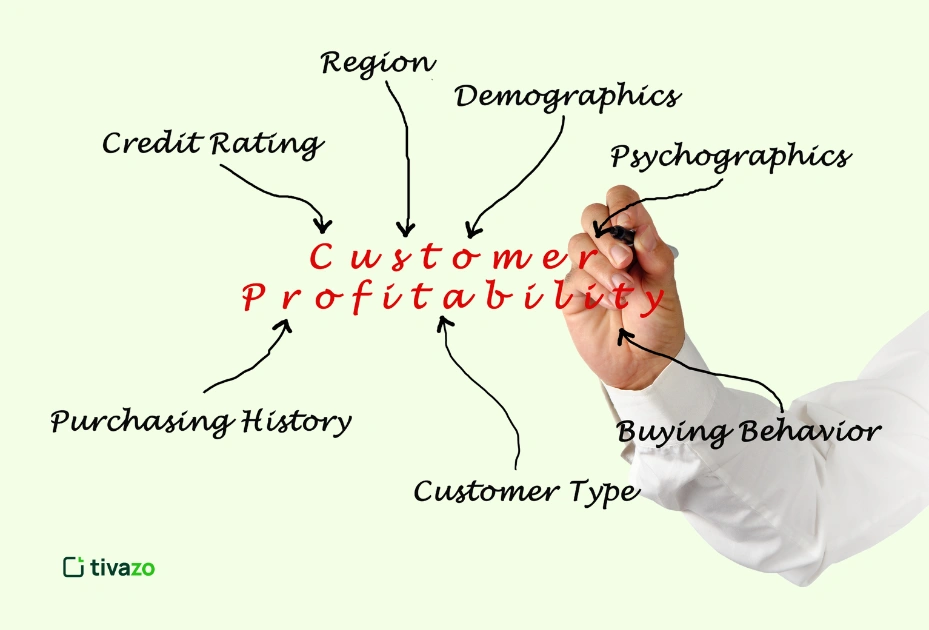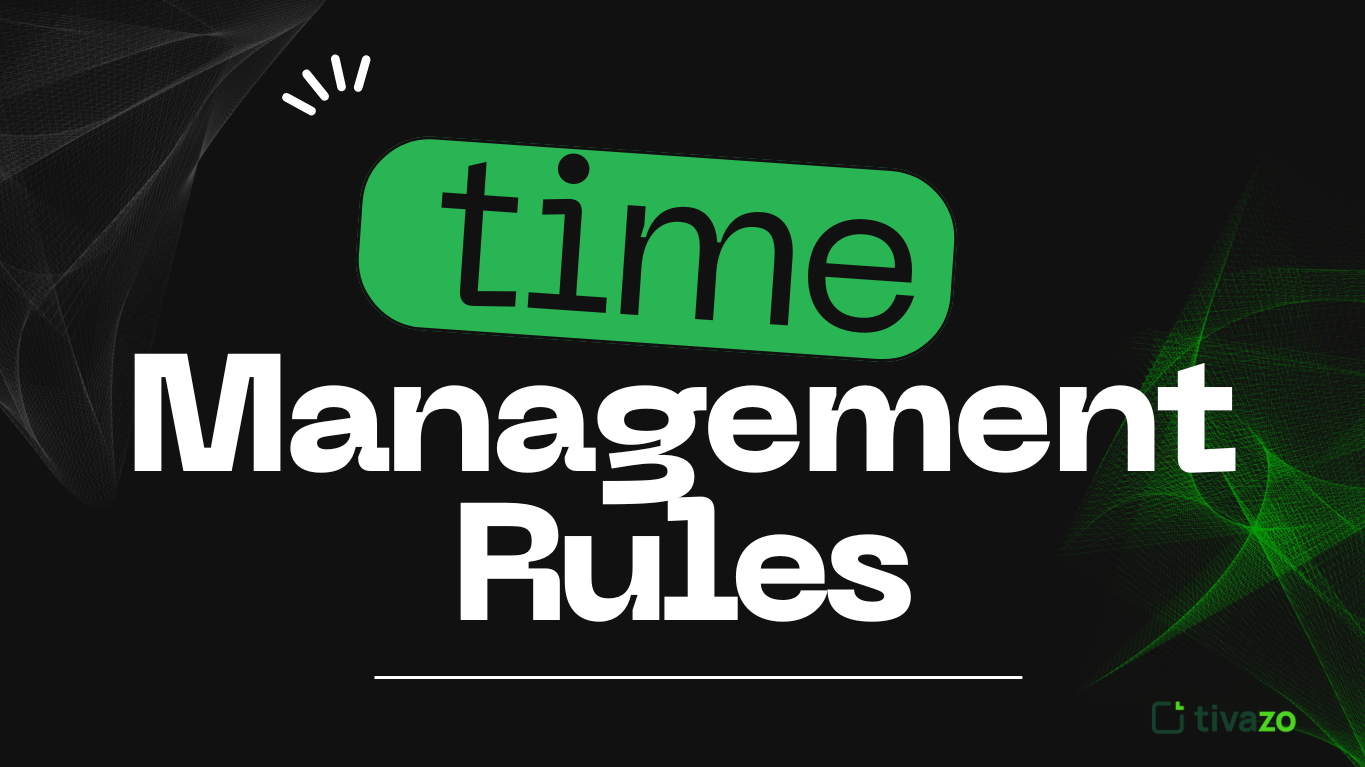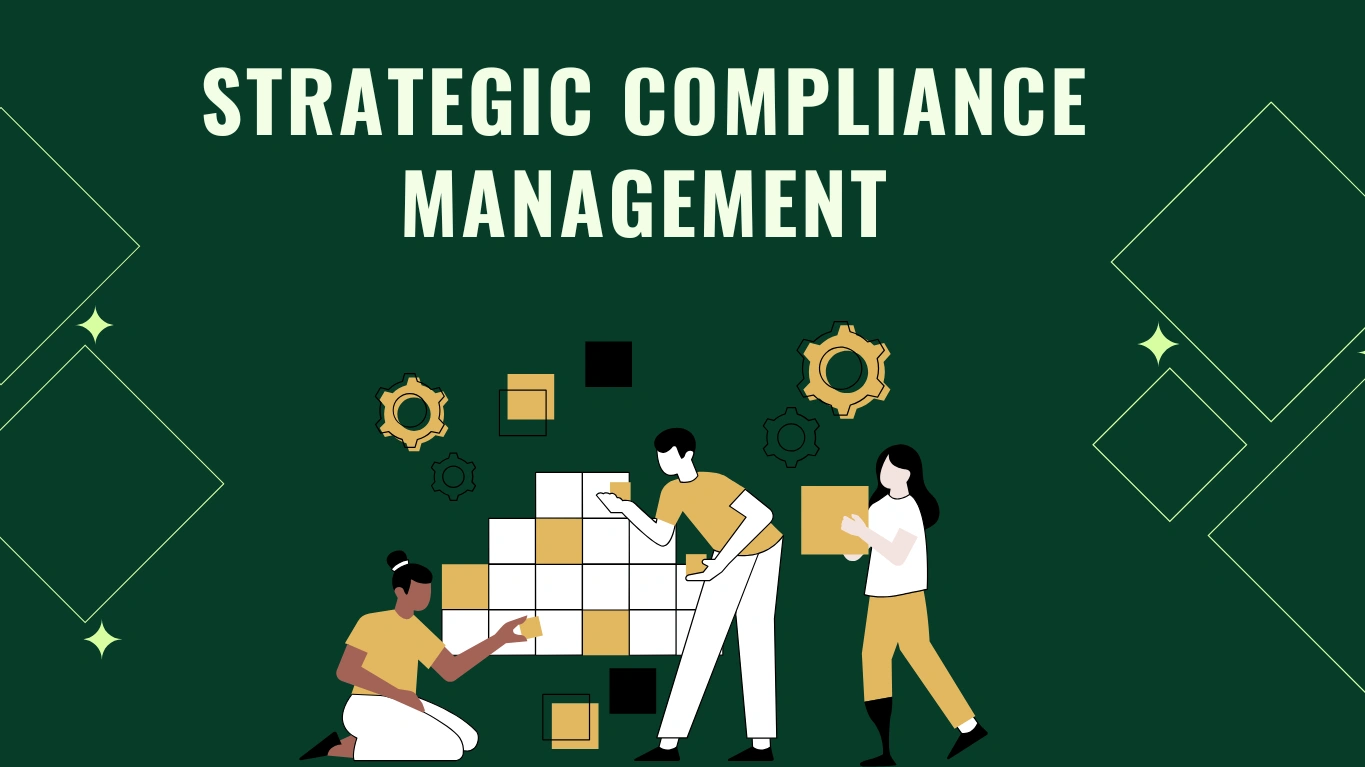In today’s fast-paced business environment, finding clients is just the first step. What makes long-term business success is identifying which clients bring actual value to your business, and which stealthily drain you of time, resources, and profit.
Not all clients who generate revenue are profitable. Some clients take too much time, require too many revisions, or require support that far exceeds their price point. This is why customer profitability analysis is a very powerful tool. It helps you measure a client’s profit and then you measure the actual customer profitability they provide to your company in relation to cost.
You can measure things like revenue per customer, client value, and cost-to-serve metrics, which provide you with clarity regarding the customer profitability metrics that really add to your bottom line, and the customers that may actually work against your profitability. In this article, you will learn how to use customer profitability analysis to segment your profitable customers, and utilize the information to make prudent business decisions that will create meaningful and sustainable business growth.
Keys Takeaways:
- What Is Customer Profitability Analysis?
- Why Measuring Client Value Matters
- Key Metrics for Customer Profitability
- How to Conduct a Customer Profitability Analysis
- Segmenting Customers Based on Profitability
- Identifying Red Flags: Unprofitable Clients
- Using Insights to Make Strategic Business Decisions
- Conclusion
- FAQs:
1. What Is Customer Profitability Analysis?
Customer profitability analysis is a strategic process used to assess how much profit each individual client generates for your business. It goes beyond looking at top-line revenue by factoring in the actual costs involved in servicing each customer—such as support, revisions, account management, and operational time.
Not to imply that all high-paying clients are automatically positive for your business, but this type of analysis requires us to look deeper and uncover the “true cost” of working with specific clients as there are hidden costs associated with clients (eg. providing copious amounts of support, changing the project too often, letting time pass, etc.) that may not be immediately apparent until we’ve done a true profitability analysis – some may prevent you from making any profit at all.
Revenue is not profit. Revenue is what keeps your business going but profit is what allows your business to grow, invest and sustain itself.
The Key Objectives of Customer Profitability Analysis Include:

- Know which clients bring in the most profits: Knowing the most profitable/best clients are valuable in understanding your professional worth – they are clients that pay you well while requiring little effort, providing a great return.
- Know which clients are not profitable: It is important to know which clients are impacting your return on resources without providing the return. Knowing your unprofitable clients allows you to determine how to deal with them going forward, which could include walking away.
- Effective resource allocation: Knowing the sources of profits can allow you to manage your time, team, and tools. By scheduling business and engagement activities based on overall project return, you will ensure you’re spending as much time and effort on those clients and projects that provide the best ROI.
- Use data to inform decisions to either scale clients or offboard clients: Once you determine the clients you want to scale or need to offboard, you can have the conviction in your decisions to support long-term success.
2. Why Measuring Client Value Matters
It is easy to get attracted to name-brand clients or a high-value contract. That being said, those accounts are not always the most profitable. Sometimes a paying client paying more means that client requires more of your time, involves more hand holding and operational work – that cost can become part of the ‘hidden cost’ and chips away at your margins. This is where it is crucial to unlock true client value.
When you complete a client profitability analysis, you begin to unlock key takeaways of your clients:
- High cost-to-serve clients that take too many resources or time to deal with: This client tends to require frequent communications to be successful with their project, custom solutions to their project or added time with on-going support. They may pay enough revenue AND require an immense amount of time and you do not achieve true profitability.
- Clients who are consistently looking to change scope or slow to pay: Scope creep, additions of work at the last minute AND slow payments disrupt both the project team and slow your cash flow, that becomes the value of the contract.
Profitability Isn’t Always Obvious:
A client’s biggest client can look like their best client; not always true. Some of those small clients can be incredibly profitable, easy to manage, receive little support, pay invoices on time, and are consistent.
In comparison, the larger clients typically require multiple meetings, last minute changes, and lots of ping pong, all of which increases work for your team, which ultimately impacts your profit margins.
If you can see these patterns clearly, you now have the power to start prioritizing the right customers. You can even restructure contracts, increase rates, or file down deliverables based on the results of customer profitability analysis.
3. Key Metrics for Customer Profitability

To effectively conduct a customer profitability analysis, you must monitor specific, meaningful metrics. These metrics will provide you a clearer idea of the revenue associated with each client, and the relative costs of keeping that client engaged with your business.
- Customer Lifetime Value (CLV): This reflects the total revenue brought to your business over the entire relationship. This allows you to target what you would consider a wide assumption of the long-term value in keeping that client.
- Revenue Per Client: This is a simple but powerful metric, targeting how much the client contributes to your top line income. Research often suggests this is the first indication of what customer is actually profitable.
- Gross Margin by Client: This is calculated by subtracting the direct costs in support of the business (labour, tools or materials) from the revenue earned from the customer. This reflects the actual profit earnings in the relationship beyond simply revenue from the customer.
- Client Acquisition Cost (CAC): This metric reflects the spend of acquiring that customer, including marketing, advertising, sales time or onboarding. This number will give you good indication if it is coming too high relative to the return, and if you should keep that client to expense ratio.
- Cost-to-Serve: This covers all the internal costs you incur to service your client, from calls and emails, to meetings, project changes, and support tickets. Clients with a high cost-to-serve will very often leave you with lower net profit (even if they have a high revenue too).
Your goal is to monitor these measures over time in order to analyze in terms of short-term and long-term client value. Reviewing these numbers periodically will provide you both a basis to identify trends and inform decisions for improving how you deliver services, and maximize profitability across all your customers.
4. How to Conduct a Customer Profitability Analysis

This is a step-by-step approach for how to complete your own customer profitability analysis, applying applied tools and processes.
Step I: Track Time and Resources for each Client
You will want to begin by tracking all internal time, based on client demand. Using time tracking tool such as Tivazo provides data on, meetings, discussions, deliverables, communications, and support activities. You will gain awareness of hidden costs in this step.
Step II: Calculate Revenue for each Client
Calculate the sum of all income generated from each client, whenever applicable. This includes all billable items including retainer fees, upsell fees, renewal fees, one-off projects, and hourly chargeable work – this becomes the top-line numbers for your analysis.
Step III: Totaling Out Your Direct and Indirect Costs
Now you can subtract the cost that are directly tied and connected to servicing that client which may consist of salary, paid contractors, tools, my administrative time, and my customer service time. Don’t forget to account for those un-measured costs such as multiple revisions or special requests.
Step IV: Calculate the Net Profit Per Client
Once you have the total revenue, you can subtract what you have accounted for costs, and you now have, total net profit per client. This clearly lays out how much value you’re getting from every client after all your costs.
Step V: Compare and Prioritize
Now that you have the profit numbers you can sort your client list from most profitable to least profitable. This allows you to prioritize clients who are worth more of your time vs those clients who are only average, and those clients who may be costing your team more money than they are worth.
Optional Step VI: Implement Reporting Tools
If you want to go to the next level but also automate this process, then connect your CRM, project management and accounting tools so that you can create dashboards to generate profitability reports. These reporting tools will enable you to make faster decisions based on the data while also simplifying scaling for your analysis.
5. Segmenting Customers Based on Profitability
After collecting all of the information you need from your customer profitability analysis, the next step is to classify your customers by profitability. Customer segmentation allows you to make better informed business decisions about how to develop strategies and allocate resources to meet the needs of the various types of clients.
✅ Tier 1: Highly Profitable Clients
Clients in this tier provide high revenues at low service costs. They typically have good long-term relationships, pay consistently, and give you stable cash flows. These clients are the most valuable to your business so you will want to invest your time in growing and retaining them.
Key points:
- High revenue generation
- Low costs to serve
- Long-term relationships, loyal customers
- Consistent and timely payments
⚠️ Tier 2: Break-even Clients
Clients in this tier generate low to moderate profit – some, at best, cover your costs but generate no profit. With some intentional efforts – efficiencies in your servicing or upselling opportunities, these clients have the potential to be more profitable. Because these clients have growth potential, you will want to work with these clients to maintain them, while also pursuing options to potentially elevate them to tier 1 clients.
Key points:
- Moderate profit margins
- Revenue to cover costs but generates little to no profit
- Potential for future improvement via options to upsell or increase efficiencies in your servicing
- Potential to upgrade – make them customers as opposed to clients, and give them tier 1 status.
❌ Tier 3: Unprofitable Clients
These clients require a great deal of effort and resources but contribute virtually no or negative profit. They often have a lot of costs related to profits because they require a lot of cost-to-serve equipment that takes mating away from your other clients. Phasing or managing these clients can help improve your business overall profitability.
Key points:
- Extensive high demands for maintenance
- Low or negative profit
- High cost-to-serve
- Uses resources for other more valuable clients
Segmenting your clients this way allows you can spent your resources wisely. Spending more time on your best clients, improving the middle group, and retracting or managing clients consuming your resources and listings is worth spending now for the best opportunities, to not only improve profitability but create overall growth for your business.
6. Identifying Red Flags: Unprofitable Clients

To some, the unprofitable clients won’t pop out right away as unprofitable. They will look important on paper with contract size, volume of spend, or size of brand. Once we look under the surface, the costs in servicing that client can be as low, but comes with the amount of time on the commitment, quietly redistributing your team energy and intention over time.
When you catch the problem early enough it can save you time and money, putting your business into significant burnout or lose financial capacity if you have to retrench from commitments not serving you well enough to justify the continued investment in resources. Here are some examples of rumblings of unprofitable clients:
- Scope creep: This occurs when clients continuously ask for unlimited modifications, additions, or changes without any additional remuneration. It creates stress on your team and can impact any ongoing projects, thereby reducing your profit margins overall.
- Delayed payments: When clients are sometimes late with their payments, it causes complications with your cash flow and affects your ability to pay your own bills on time. This can also cause needless financial pressure for you and affect your ability to grow your business.
- Excessive communication: Clients that insist on frequent meetings, want constant updates, or want to micromanage every detail, drain too much time from your team to be productive on their client project, and, therefore, have a limited if any, impact on profit in comparison to more productive client work!
- Not respecting boundaries: Some clients have inflated expectations around timescale or expect work to be done outside normal working hours without additional remuneration. This can lead to burnout and the team feeling less appreciated.
If you can identify these behaviours early enough, you can safeguard your team’s time and mental well-being. In some cases, the best thing to do might be to close the door and part ways professionally and respectfully with clients who are consistently unprofitable to work with. Then, your valuable resources can be distributed to clients who truly add value and create a much more sustainable and healthier culture!
7. Using Insights to Make Strategic Business Decisions

Once you clearly know which customers truly generate profit for your business and which do not, you can start taking wiser, more focused actions to grow your company in the right direction. Instead of stumbling blindly or spreading your energy thin across many areas, you can concentrate on what really matters.
The following are the methods with which knowing your customer’s profitability can help you to become more action oriented:
- Reallocate resources: Spend more time and effort on the clients who bring in the best profits. And when it’s focused on them, you can build even stronger relationships and exceed their service expectations.
- Improve Pricing: By understanding your cost-to-serve and analyzing your clients’ past behavior, you can refine your pricing strategies. Increasing rates for clients who require extra support or providing discounts to long-term, profitable clients, allows you to align your prices with your efforts and the value you provide.
- Upsell Strategically: Look for Tier 2 clients that have upside and discuss potential add-on value-added services or products. Upselling in the right environment can help grow your revenues, but also benefits the client experience and overall satisfaction, which helps retention.
- Fire Strategically: Unprofitable or toxic clients rarely lead you practice positively. If terminating those relationships is done respectfully and professionally it frees up resources and team lifts the morale to cultivate healthier relationships.
- Improve Processes: You should also engineer your operational processes to automate activities that are either repetitive, or are simply too time-consuming (by the time you finish, you might as well do it over!). The aim here is to reduce your cost-to-service, and free up capacity with your team to focus on the tasks that are above embellishment to your profitability.
When done properly, customer profitability analysis helps build an important strategic framework that builds a healthier, more efficient, scalable business that can grow.
Conclusion
If you want to grow your business and earn a bigger profit without burning yourself out, learning how to analyze customer profitability is essential. While customer profitability analysis shows you which customers bring value to your business and which take up too much time/money, you can focus on which customers you really need to do business with.
By using customer profitability analysis regularly to assess your progress, you can develop a good understanding of where your money should go and where your efforts should be focused. Whether you’re freelancing, working within an agency, or running a SaaS business, knowing your profitable customers will drastically alter the way you do business. You could change the prices you charge, enhance services, and even decide when it might be time to part ways with customers who no longer provide significant value.
Staying financially solvent is important, but at the end of the day, it’s not just about the numbers. customer profitability analysis is a tool for strengthening your business longevity.




